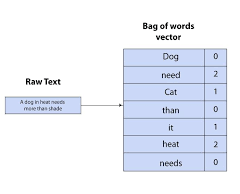Martech Modernization: The Trends, Challenges, and Opportunities
A Snapshot of Martech Strategies and CDP Adoption
According to research by Acxiom, 65% of companies with a defined martech strategy utilize a Customer Data Platform (CDP), compared to just 43% without one. This significant gap underscores the strategic role of CDPs in martech adoption. Additionally, nearly all businesses surveyed plan to revise their martech stack within the next 12 months, with 29% adding new tools and 15% consolidating existing ones.
The Transformative Marketing Landscape
Rapid technological advancements, changing customer expectations, and evolving identity ecosystems are fundamentally reshaping how brands engage their audiences. In this environment, modernizing martech has become essential for delivering the personalized experiences customers demand.
However, modernization presents challenges such as siloed data, fragmented technologies, and gaps in expertise, complicating efforts to adapt. To gain insights into these dynamics, Acxiom surveyed 200 martech decision-makers from the US and UK about their modernization plans, motivations, and obstacles.
The findings reveal a widespread push for martech updates, with brands seeking support to navigate this complex journey.
SECTION ONE: A Martech Reset is Underway
Martech Strategy Rises to the Top
When asked to prioritize their marketing objectives, 34% of respondents listed developing a martech strategy among their top three goals. This places it alongside traditional objectives like increasing brand awareness and customer acquisition, reflecting its growing importance in achieving broader marketing goals.
Even considering that survey respondents may prioritize martech more than the average business leader, the results highlight the industry’s dynamism and the pressing need for a martech reset.
Widespread Stack Adjustments
Nearly all surveyed businesses (99%) plan to adjust their martech stack in the next year. Key trends include:
- 35% replacing existing tools to improve efficiency and performance.
- 29% augmenting their stack with new technologies.
This widespread activity emphasizes the high priority placed on martech optimization.
Streamlining and Experimentation
Some organizations focus on refining their existing stacks, while others are piloting new platforms:
- A Chief Technology Officer from a large US tech company described efforts to “trim the fat” from their martech stack, resulting in a streamlined suite of core solutions.
- A global insurance provider is evaluating and piloting over a dozen new platforms to enhance capabilities in a traditionally tech-averse industry.
C-Suite Engagement
Martech modernization has also captured the attention of executive leadership. 60% of respondents noted that martech has become a higher priority for their C-suite in recent years, particularly in smaller companies leveraging technology to maximize resources and compete with larger rivals.
Budget Increases Despite Economic Pressures
In a challenging economic climate, 65% of respondents expect their martech budgets to grow over the next year, while only 10% foresee cuts. This trend reflects the recognition of martech as a strategic investment critical for maintaining competitiveness.
SECTION TWO: Drivers of Martech Modernization
Why Modernize?
Modernization efforts are driven by a mix of goal-oriented and technical motivations. Key drivers include:
- Supporting new marketing channels to meet customer expectations.
- Enhancing performance to achieve marketing objectives.
- Improving the customer experience to foster engagement and loyalty.
Secondary motivations include streamlining integration, ensuring regulatory compliance, and reducing operational complexity.
Key Takeaways
- Martech Strategies and Tools: A strong martech strategy increases CDP adoption and drives broader adoption of tools.
- Budget Focus: Despite economic challenges, businesses continue to invest in martech, with C-suite buy-in driving prioritization.
- Challenges Ahead: Siloed data, fragmented tech, and evolving identity standards remain significant obstacles.
As martech modernization accelerates, businesses must balance innovation with strategic planning to navigate this transformative era successfully.
🔔🔔 Follow us on LinkedIn 🔔🔔













